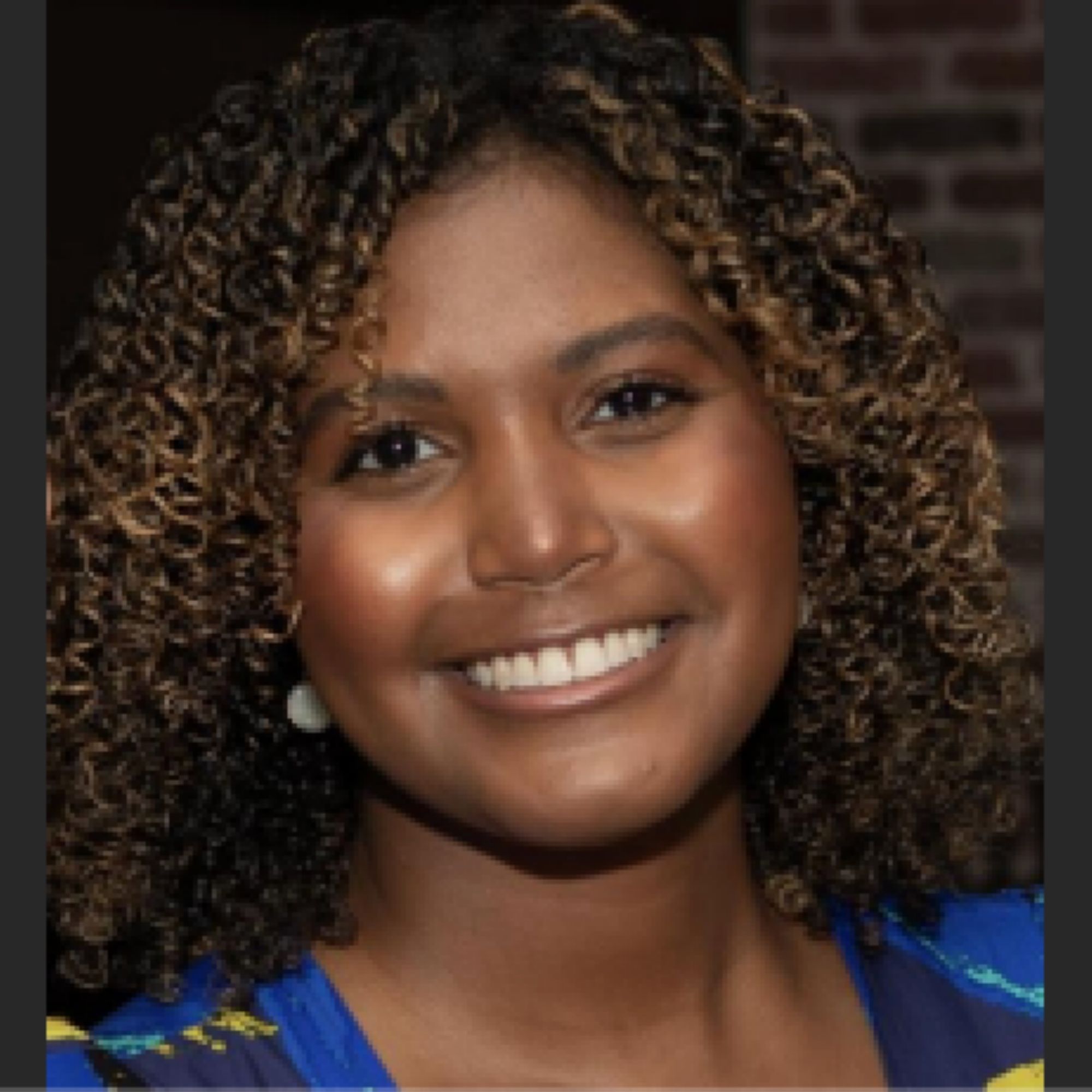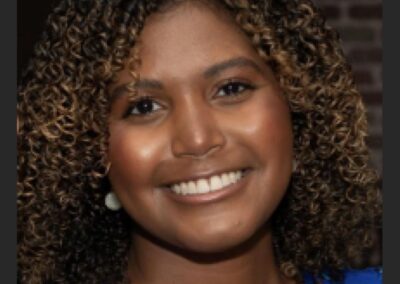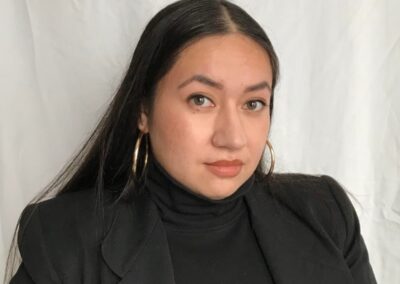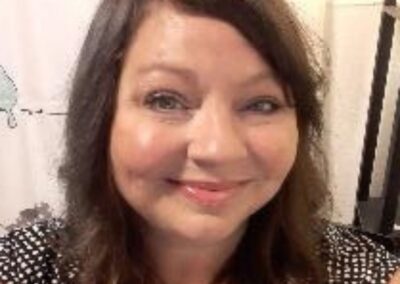She/Her
Introduction
I was very intentional about the community I sought to interview for this project. The reason the Community Coordinator position was created was to reach populations that were historically underrepresented in the creation and implementation of climate change policies, and so I made sure that the people I talked to reflected this goal. As a woman of color who grew up in a low-socioeconomic household, I made sure to focus on interviewing similar populations who I know do not get a chance to have their voices and opinions heard to help shape the policies that
affect them. My community interviews mainly took place during the Sunrise Project’s Community meals where I was able to talk to members of the community who were housing vulnerable, lower-socioeconomic, people of color, older adults, teens, and parents. In my personal life, I interviewed an older woman of color who was raised by her grandmother and a young indigenous woman who came and spoke to me twice because she had so much to share and expressed that no one had ever cared enough to seriously listen to the concerns around the issues of climate change with the young native population in Lawrence.
The common themes in the climate stories I engaged in revolved around the concerns people had about their physical and mental health, the gentrification of Downtown Lawrence, the lack of things to do in Lawrence during the summer and winter seasons, and the fear of the unknown (for current and future generations).
Physical and Mental Health
Every person I talked to made at least one comment about how the extreme heat in the summer and the extreme cold during the winter affected their physical health and mental wellbeing. Storytellers shared memories of how they used to be able to do more outdoor activities all year long in Kansas, and now things have become unbearable, and their physical health does not enable them to be able to be outdoors as much as they used to. Parents shared stories about their children’s asthma getting worse over this past year because of the intense summer heat and one young woman shared with me how, during this past summer, she would see people walking to the Lawrence Pantry on extremely hot days pass out in front of her house. These experiences were traumatic for both her family and the people suffering from heat exhaustion.
One powerful story shared regarding how the heat affected their physical and mental health was from a young teen who worked at a local small business over the summer. She loved her job and was dedicated to the mission of the small business, but the company did not have that much money, and as a result could not fix their AC unit. For an entire week, when the heat got too extreme, every employee was throwing up and realized that they were suffering from heat exhaustion. The solution the business chose to solve this issue was sending everyone home until the temperature cooled, because they still did not have the money to fix their AC.
Gentrification
Storytellers upset about the gentrification going on in Lawrence all expressed the same complaints about how making Lawrence less urban and rural has made it unlivable during the heat and cold. During the summer there is not enough shade or places to sit because the city is getting rid of trees, and during the winter resources to maintain roads and keep people warm are not distributed equally. One family shared a story about how they made the decision to move out of Lawrence to Baldwin because they enjoy being outside and missed having an abundance of trees in their neighborhood to provide shade during the summer.
The Indigenous woman, who shared multiple stories with me, brought to my attention how the Haskell Wetlands have been slowly deteriorating, and the animals who inhabited the Wetlands have been suffering due to the noise pollution from the new developments being built in West Lawrence. She expressed how even though her community has been trying to talk to the city about this issue–about how the new construction is separating the Baker Wetlands from the Haskell wetlands, causing further harm–she feels like their concerns are unheard and there is no accountability.
Things To Do
The parents, young teens, and people who moved to Lawrence from out-of-state all
expressed that they wished Lawrence had things to do during the winter and summer seasons. Parents of young children wished that Lawrence had splash parks–like you find in cities on the East Coast–during the summer that they could take their children to so that they could cool off. Parents of teens, and teenagers themselves, wished that during the winter Lawrence offered winter activities like a portable ice-skating rink. People highlighted that in other places around the country where they moved from, that also had extremely hot summers and colder winters, there would be activities provided by the city for them to do, which improved their quality of life.
Fear of the Unknown
The overwhelming anxiety being felt by the storytellers I talked to all revolved around the unknown immediate and long-term effects of climate change. People criticized the City of Lawrence for the lack of preparedness and planning during the winter, highlighting that the snap freeze last winter which showed them how unprepared the city was at keeping them safe. Grandparents talked to me about the fears they have of the city not acting fast enough to do enough change so that their grandchildren would be able to live a healthy adult life. An older woman of color highlighted that whenever she is moving to a new apartment in Lawrence, she makes sure she is never living on the second floor because the fear of flooding is greater than the toll walking upstairs does on her body and is doubtful that the city would do anything to help mitigate her concerns.
One woman of color shared how everyday she is nervous leaving the house and making sure her school-aged children are properly dressed because of how drastic the weather changes each day. She moved to Lawrence from St. Louis and was upset that Lawrence did not have their own local news station or radar that she could get daily weather updates from so she could make
sure her children with asthma did not end the day wheezing and having difficulty breathing because the temperature from the morning was drastically different from the temperature in the late afternoon.
Conclusion
None of the subjects I highlighted were shared with me in a vacuum. Many of the themes shared overlapped, but the most central theme to every story was the fear of the unknown. While climate change is causing unprecedented weather-related events, Douglas County community members felt as if the county itself was also one of the main causes of their unknowing regarding the climate. Reflecting on the conclusion of my role as a Community Coordinator, I feel like the Climate Action Plan project came at the opportune time to start the process of updating policy to mediating the community’s anxieties around climate change.
Moving forward I think one of the biggest challenges the Douglas County Climate Action Planning team has is doing justice to the population they sought input from. One of the challenges addressed during our Community Coordinator training was how to not treat the underrepresented individuals we were collecting stories from. We had to be intentional so that storytellers felt like their story was being genuinely heard and not like they were being used. A lot of the people who shared their story were vulnerable and trusted me, and I would like to see that taken seriously by Douglas County decision makers in both the policies they write, the grants they approve, and the way they communicate with their constituents even after this project has concluded.





